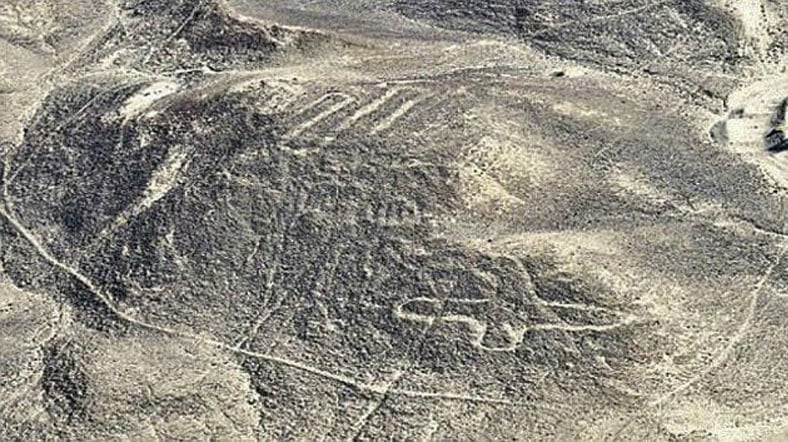Art World
Pilot Spots Ancient Peruvian Geoglyphs


Sarah Cascone

Late last month, a pilot flying above the Nazca desert in southwestern Peru discovered a series of hitherto unknown large-scale ancient geoglyphs, reports the Huffington Post. The lines, which include what appears to be a 200-foot-long snake, a zigzagging line, and a large bird, were likely uncovered during recent sandstorms, and are thought to be close to 2,000 years old.
Peru’s coastal plain region is home to many similar large-scale line drawings, scattered over a 280-square-mile area. The mysterious etchings are the work of the Nazca, who ruled the southern region of Peru from about 100 BCE to 800 CE. Archeologists have long speculated over the purpose of the massive Nazca lines, which likely had ceremonial or astronomical significance.
This latest discovery, made by pilot and researcher Eduardo Herrán Gómez de la Torre, was first announced in Spanish-language Peruvian newspaper El Comercio. If the geoglyphs are as old as the experts think they are, they may even predate the Nazca, coming from the transitional period between the previous culture, the Paracas— known for their intricate textile work—and the Nazca.
Regardless of purpose or origin, the new lines are a hugely important archeological find. The previously known Nazca lines have been a United Nations Educational, Scientific and Cultural Organization (UNESCO) World Heritage Site since 1994, and are described by UNESCO as “a unique and magnificent artistic achievement that is unrivaled in its dimensions and diversity anywhere in the prehistoric world.”